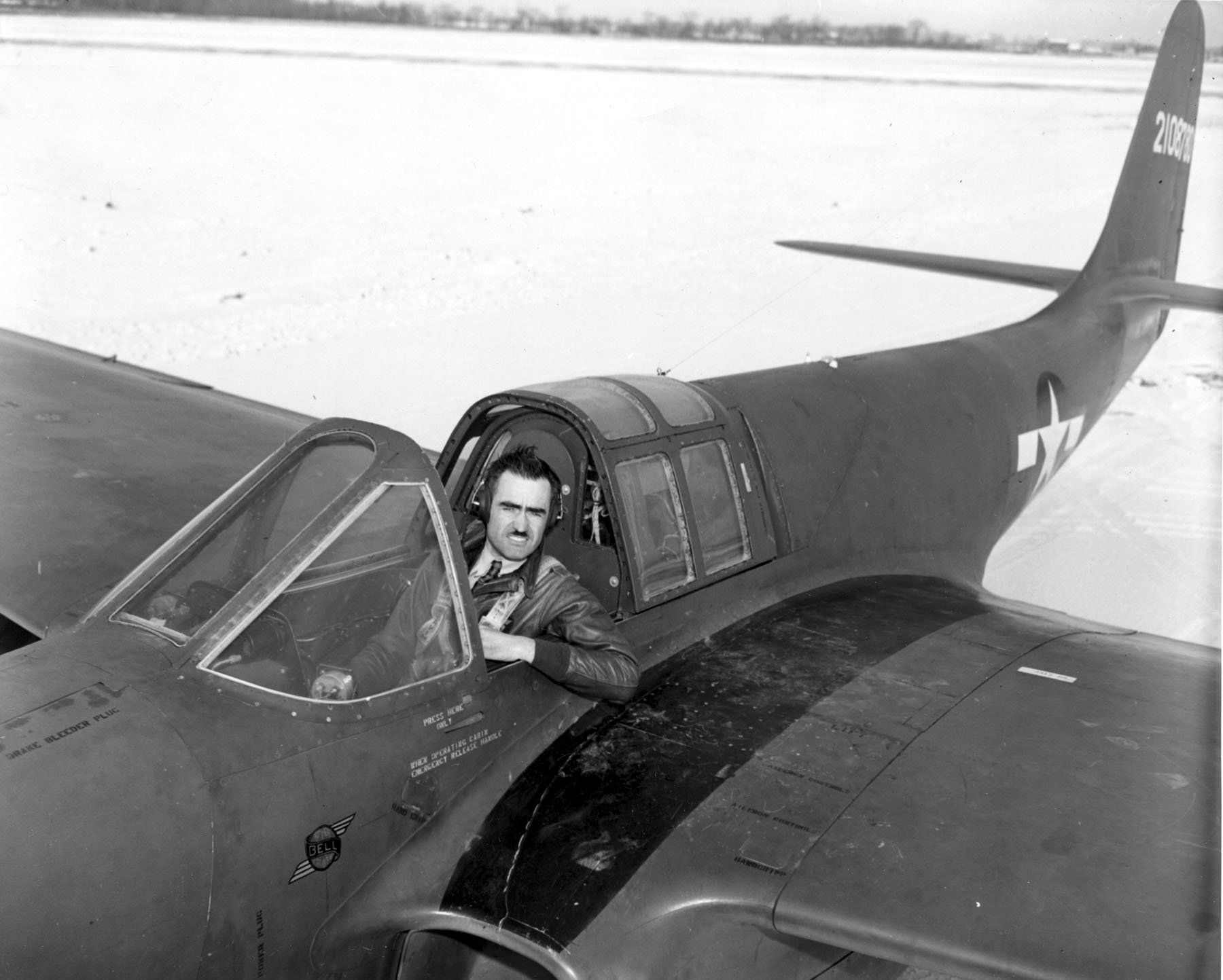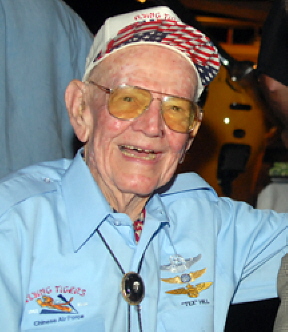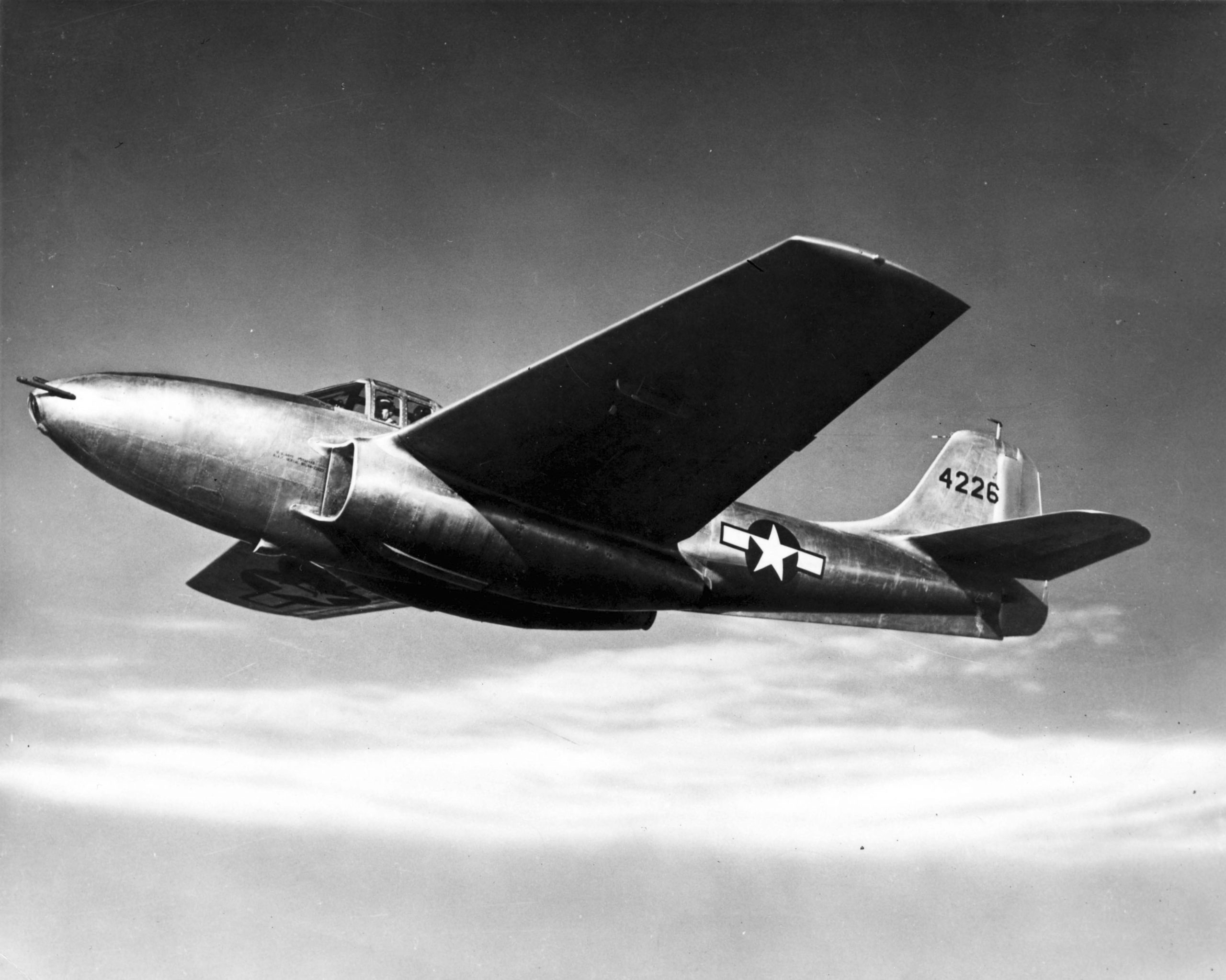Tex Hill – Ichi-Go and Jet Age (Part 6)
 April, 1944. Tex Hill has been back in China now for 6 months, leading the 23rd Fighter Squadron. As part of the 14th Air Force, he help carry out Gen. Chennault’s air campaign against Japanese supply lines. While constantly lacking in material and manpower, the 14th Air Force was having a major impact on the Japanese ability to move materials overland in China and along the Chinese coast. The Japanese empire had also suffered a series of defeats in the Pacific, putting them on a strategic defensive.
April, 1944. Tex Hill has been back in China now for 6 months, leading the 23rd Fighter Squadron. As part of the 14th Air Force, he help carry out Gen. Chennault’s air campaign against Japanese supply lines. While constantly lacking in material and manpower, the 14th Air Force was having a major impact on the Japanese ability to move materials overland in China and along the Chinese coast. The Japanese empire had also suffered a series of defeats in the Pacific, putting them on a strategic defensive.
It was under these circumstances that operation Ichi-Go was launched. With over 400,000 troops mobilized, there were two goals to this massive operation. First was to create a continuous overland link between Northern China and Hong Kong. Second, was to capture the airbases used by the 14th Air Force and remove the possibility of B-29’s from raiding Japan from those airfields. Tex Hill’s Squadron was sent out to strafe and bomb the Japanese ground troops. The fighting was so close that fighters completed their mission and returned to base within 30 minutes. Tex Hill’s problem didn’t stop with the Japanese advance, he also faced a man power shortage. He was grounding men after 100 missions due to combat fatigue; however, General Edgar Glenn, the 14th Air Force’s Chief of Staff, insisted that his men continue to fly. Tex simply refused, threatening to ask the flight surgeon to declare them unfit.
By June, the Japanese attacked the major city of Changsha and its nearby city Hengyang. The Japanese had already tried three times during war to take this Changsha, but was repulsed each time. With an overwhelming 360,000 troops the city finally fell, leaving Hengyang and its airfield as the last major city to hold out in the Japanese offensive. The 23rd FS was helping drop supplies into Hengyang, but after 47 days of fighting, that city also fell in August. At this point, the 23rd FS base in Kweilin was due to be captured. On Sept 13th, the airfield was to be abandoned, with Tex flying out in Gen. Clinton “Casey” Vincent’s B-25 Silver Slipper. However, Tex and Casey couldn’t leave the base without one last gift for the arriving Japanese. He and Casey had shared one of nicest house in the airbase, sure that it would be occupied by a high ranking Japanese officer, they booby trapped the toilet bowl. They were the last plane to leave the airfield.

By October, Hill left China for the last time during the war. He was officially credited with 18.25 enemy aircrafts. On return to the United States, he was assigned to lead the 412th Fighter Group. This was the first operational US jet group, with its head quarter in Bakersfield, California. While waiting for the Jets, Tex flew the P-51s that he was familiar with. When the first p-59A Airacomets arrived, he was very disappointed. According to Tex, the P-59s “weren’t worth a damn, but it was a start. Performance was terrible. It was short-legged and not a good gun platform; it wasn’t stable. It was underpowered”
“weren’t worth a damn, but it was a start. Performance was terrible. It was short-legged and not a good gun platform; it wasn’t stable. It was underpowered”

Tex had heard that the P-59 was able to turn inside a Zero, and he just had to test out the rumor. Flying in a captured Zero, Tex flew in a mock dog fight against the P-59. While flying inverted, the engine suddenly died. Unable to restart the engine, he was forced to make a dead stick landing, narrowly missing crashing while flying a Japanese fighter. As Tex later described it – “What a hell of an irony that would have been.” A few days later, he was able to fly the “Green Hornet”, the first prototype of the P-80 shooting Star – the world of transitioning into the jet age.

In July 1946, Tex Hill left active duty and joined the Texas Air National Guard. Taking command of the 58th Fighter Wing, he was appointed a Brigadier General and became the youngest general in the history of the Air National Guard. Toward the end of the Korean war, Tex joined the Air Force reserve as a colonel, figuring this would keep him flying. That he did as commander of the 8707th training Group at Brooks Air Force base, flying the T-28 Trojan. He finally left military service in 1968.
David “Tex” Hill, passed away on Oct 11, 2007 at the age of 92 and was buried at the Fort Sam Houston National Cemetery.

Tex Hill’s P-59A Airacomet (serial #22613)
![]() Article on building a model of this plane p-59 Airocomet – Hobby Craft
Article on building a model of this plane p-59 Airocomet – Hobby Craft
The British was the first to succeed in developing a jet engine for their Gloster jet aircrafts. After sharing the planes to the Americans, engineers at General Electric were able to produce their version of the British designed engine. For the airframe, they turned to the Bell Aircraft Corporation. Even before the initial 13 YP-59 prototypes were made available and initial poor flight test results, the US Army Air Force placed an order for 80 P-59s.
Even though P-59’s carried turbojet engines, it was not able to out fly the P-51 mustang and was front line service. It was role was to be a jet trainer and test case for jet technology.
The initial prototypes YP-59 were painted overall Olive Drab. The production P-59A’s that Tex Hill flew were all in natural metal finish. They had an anti-glare panel of olive drab. Since these planes never entered front line service, their marking were very simple. Serial numbers 422613 were painted in black on the rudder, and larger numerals 82 were on both sides of the nose. The only other markings were US star insignias on both sides, port side top wing, and starboard bottom wing.
